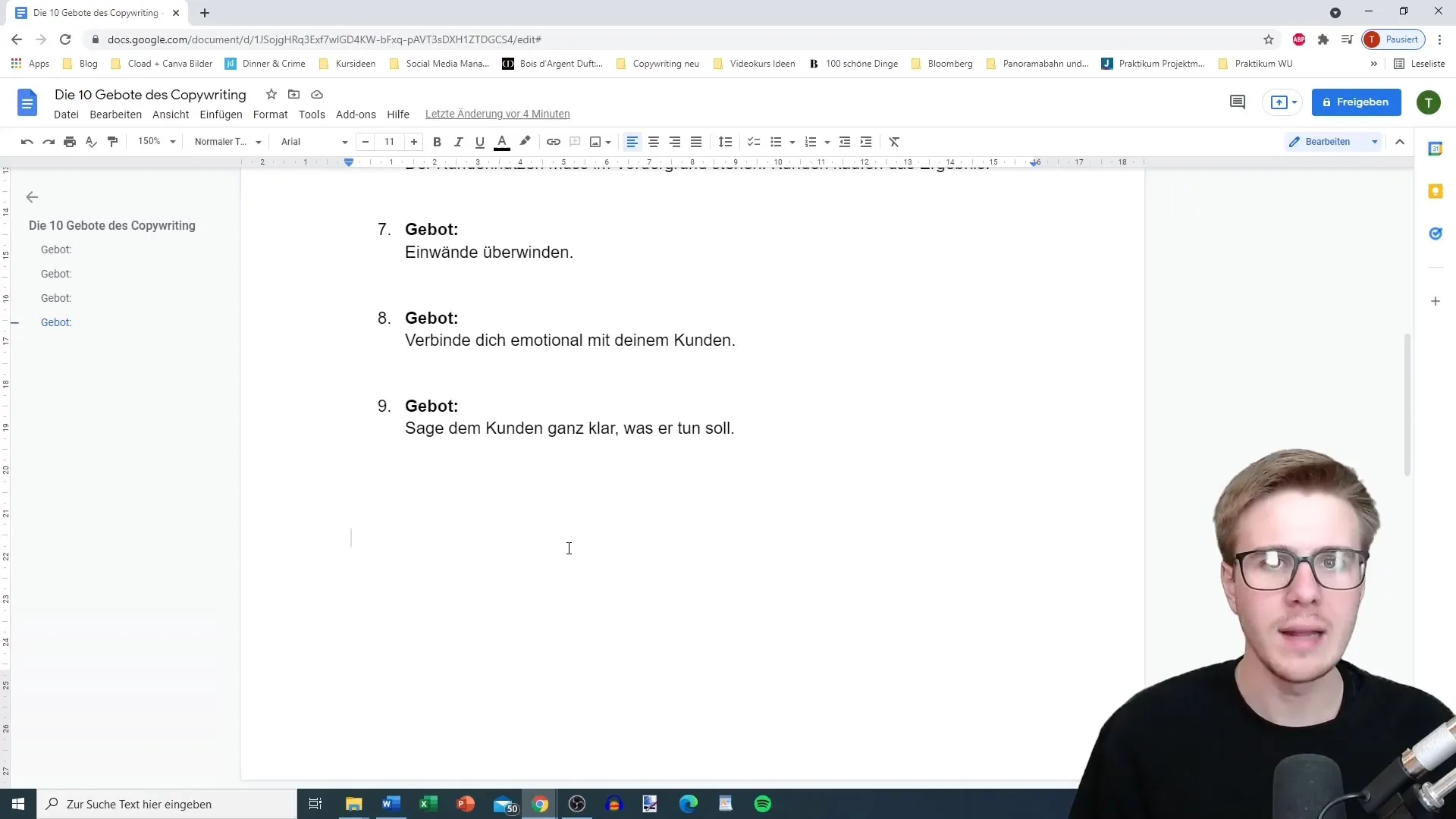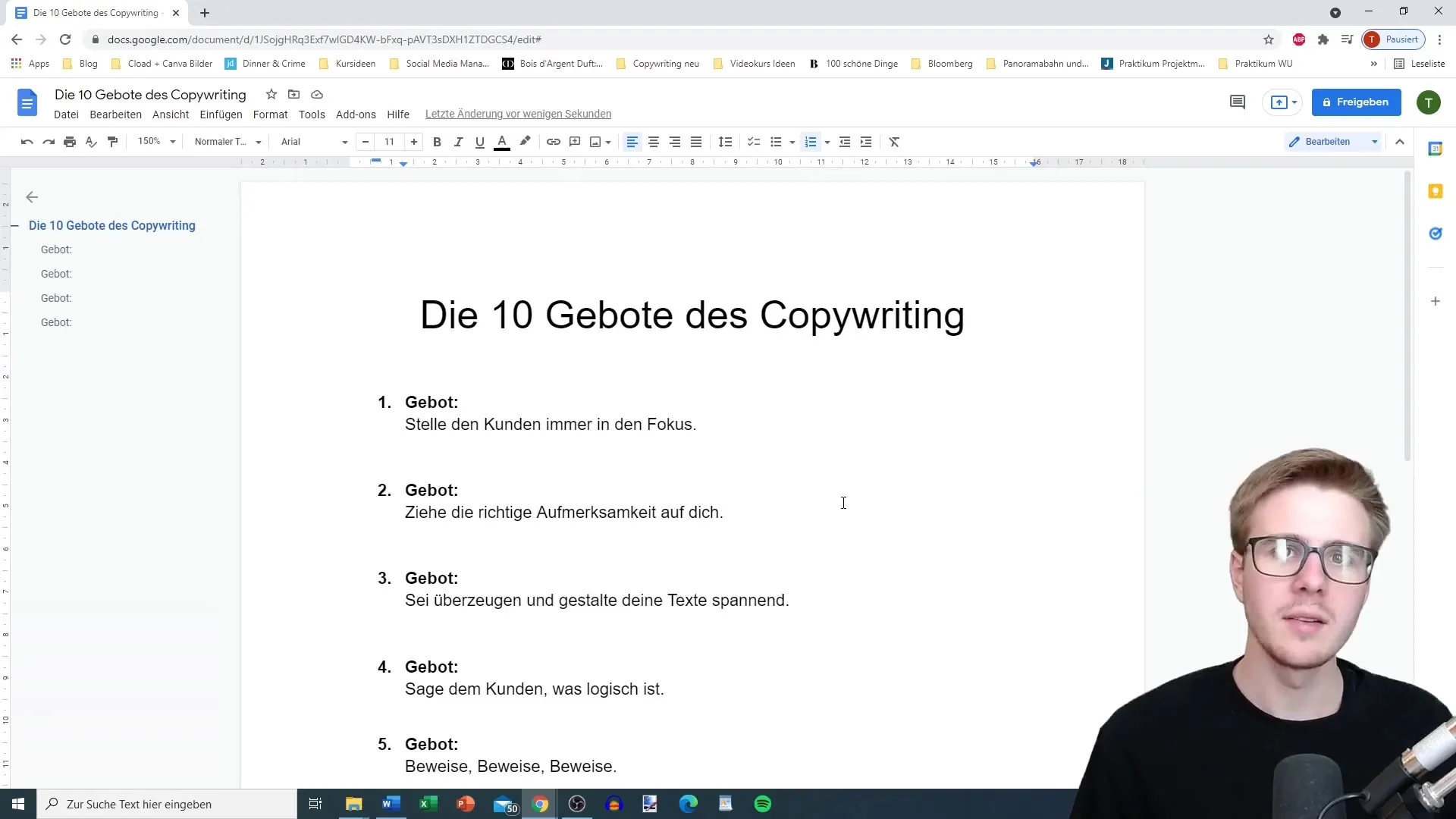You have learned the basics of copywriting and are ready to take your skills to the next level. The crucial point that is often overlooked concerns the timing at which you prompt your readers to take action. It is not enough to simply communicate clearly what they should do; you must also tell them when to act and what consequences quick action will bring. In this guide, you will learn how to create effective calls to action based on urgency and differentiate yourself from the competition.
Key Insights
- Clarity about the action and the timing is essential.
- Urgency increases the likelihood of someone taking action.
- Emotional sales strategies should be combined with time constraints.
Step-by-Step Guide
1. Define the Action Clearly
The first step to an effective call to action is to precisely define what you expect from your reader. Avoid vague wordings. Instead of "Click here," you should suggest specific actions like "Click now on the link to receive your checklist."

2. Clarify the Timing
Customers not only need to know what to do, but also when to do it. Phrase your messages in a way that conveys a sense of urgency. Instead of "Click the link," use "Click now on the link to get 25% discount."
3. Create Urgency
Use time-limited offers to prompt your readers to take action. By using phrases like "Click on the link within the next 10 minutes and secure 30% discount," you generate a sense of urgency that motivates your readers to act immediately.
4. Utilize a Countdown
The visual representation of a countdown clock can enhance your call to action. When readers see time running out, they are more inclined to act immediately to avoid missing out on an offer.
5. Communicate Limitation
Inform your readers that available slots or products are limited. Use clear statements like "Only 2 out of 100 slots available" or "Offer ends in 10 minutes." These phrases reinforce the sense of urgency.
6. Utilize Emotional Appeals
If emotions play a role in the purchase, you should also incorporate the emotional aspect in your copywriting. Make your readers aware that they have the chance to gain something valuable before it's too late. This triggers their emotional buying impulses.
7. Manage Time in the Offer
Ensure that your customers are clearly presented with the critical time frame. Instead of being vague with "till next week," be precise: "The offer ends tomorrow. Seize the opportunity now or never." This helps create the final pressure in the decision-making process.
8. Avoid Prolonged Considerations
Remind your readers that too much time for consideration often leads to rationality and may distract from the initial emotions. If they wait too long, they may veer away from the idea of making a purchase.
9. Maintain Urgent Communication
Keep the focus on the urgency of availing your offer. Write sentences like "Secure your discount today" instead of "Secure your discount at some point." Clear, precise, and slow formulations are more convincing.
10. Review and Evaluation
After applying all the points, review the effectiveness and relevance of your calls to action. Pay attention to obtaining feedback from your readers or customers to make future adjustments and further optimize your strategy.

Summary
To maximize the effectiveness of your calls to action in copywriting, it is important to communicate both clarity about the action and a clear time frame. By creating urgency, you can increase the likelihood that your readers will take action and achieve more successful sales figures. The above-mentioned steps help you formulate effective calls to action based on emotional and temporal urgency.
Frequently Asked Questions
What is meant by a call to action in copywriting?A call to action is a clear instruction to the reader designed to motivate them to take a specific action, e.g. "Buy now!"
How can I incorporate urgency into my texts?You can create urgency by accepting time-limited offers or restricting the availability of products or services.
Why is emotional appeal important in copywriting?Emotional appeal helps to establish a connection with the reader and motivate them to make impulsive decisions.
How can I increase readers' immediate action?By providing clear time constraints and showing the reader what they gain by acting now, you can reinforce others' actions.
What should I avoid when writing calls to action?Avoid vague wording and overly long decision periods, as these can deter the reader from taking action.


